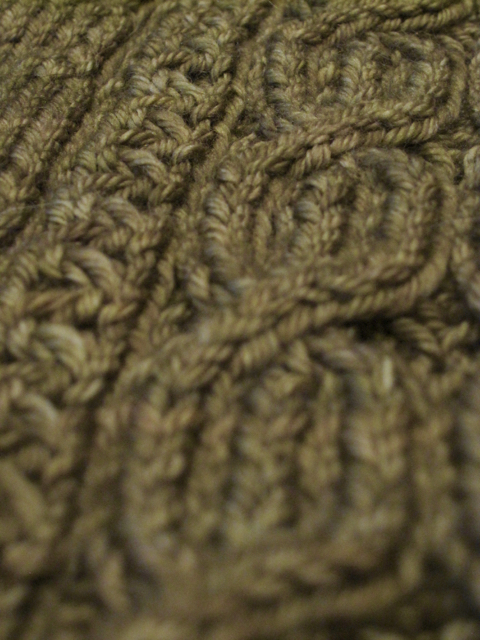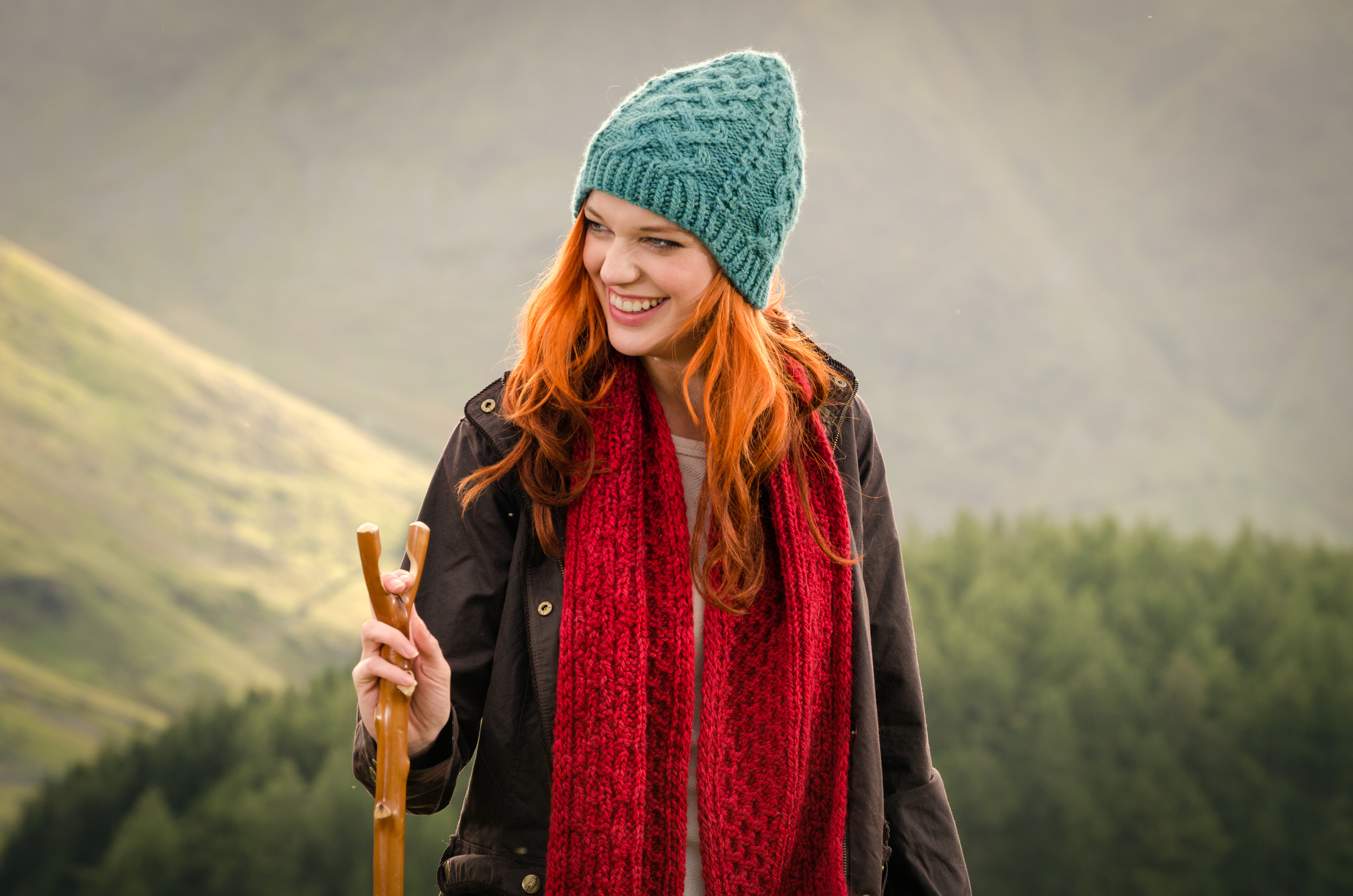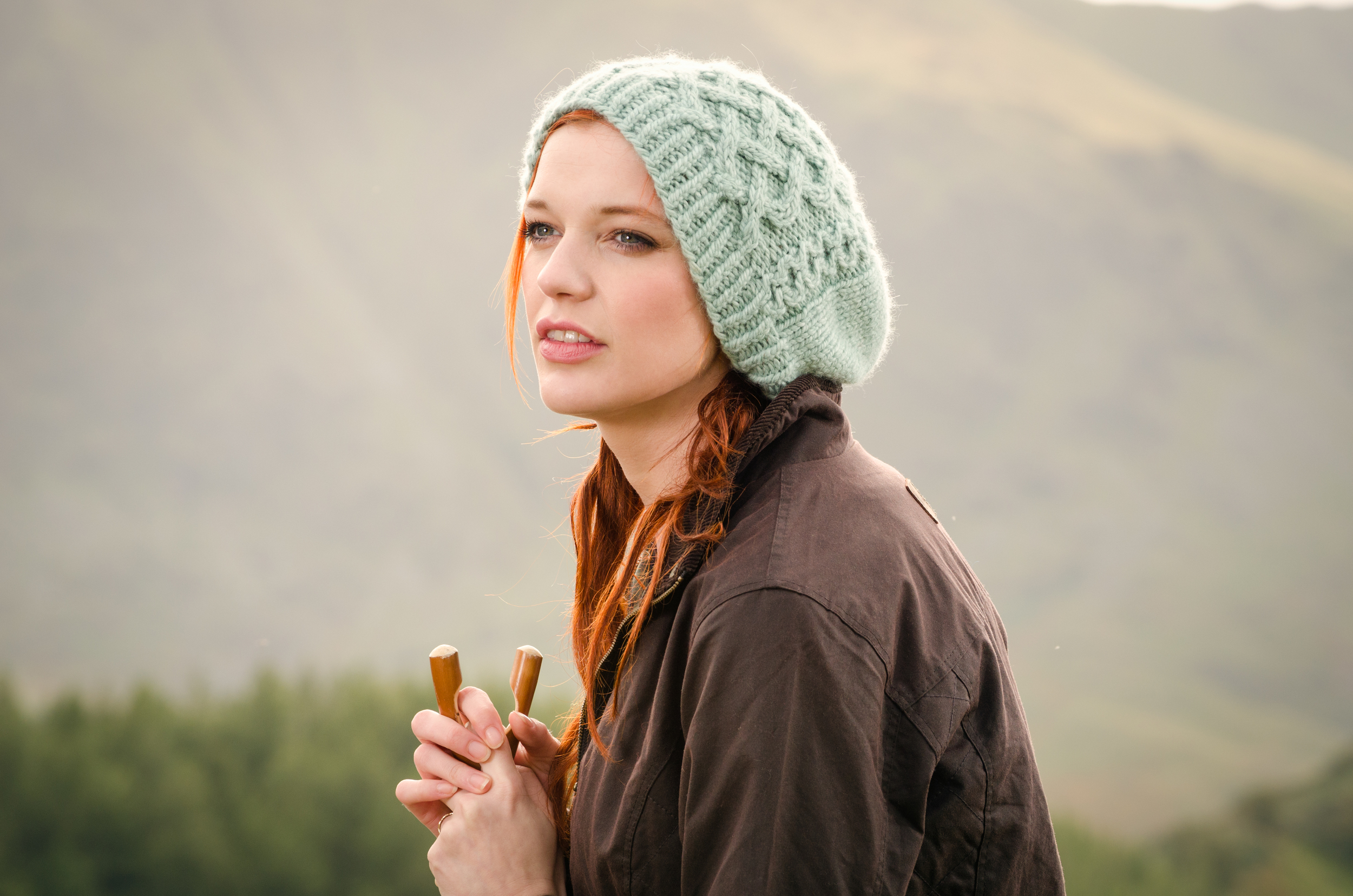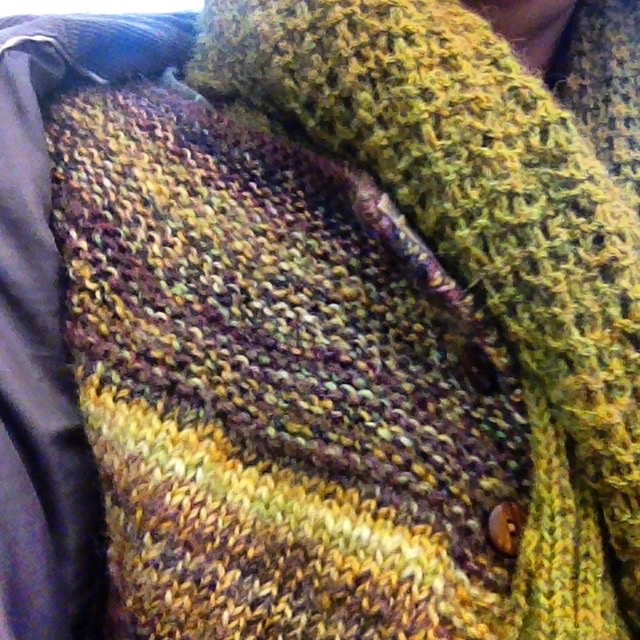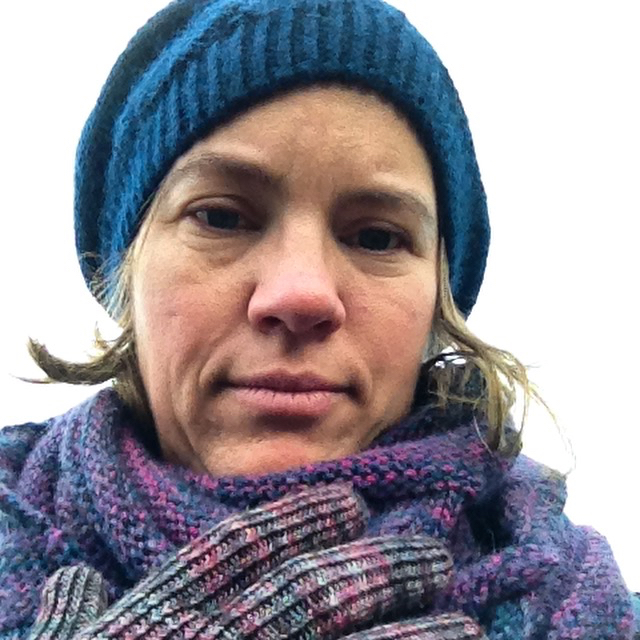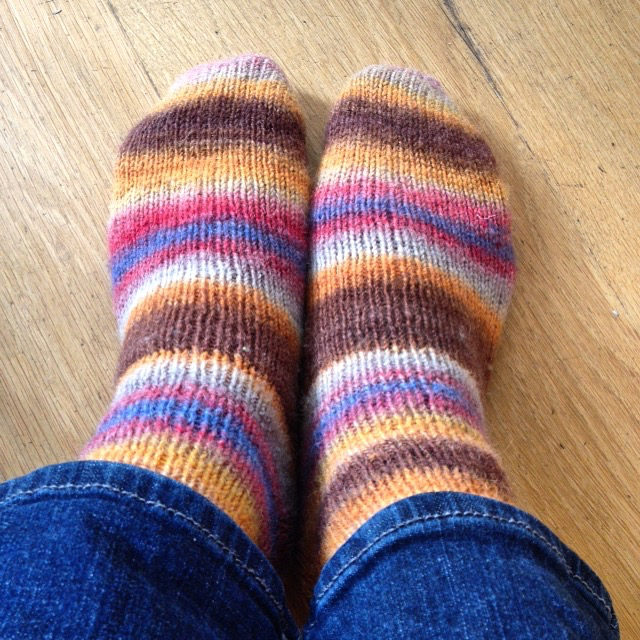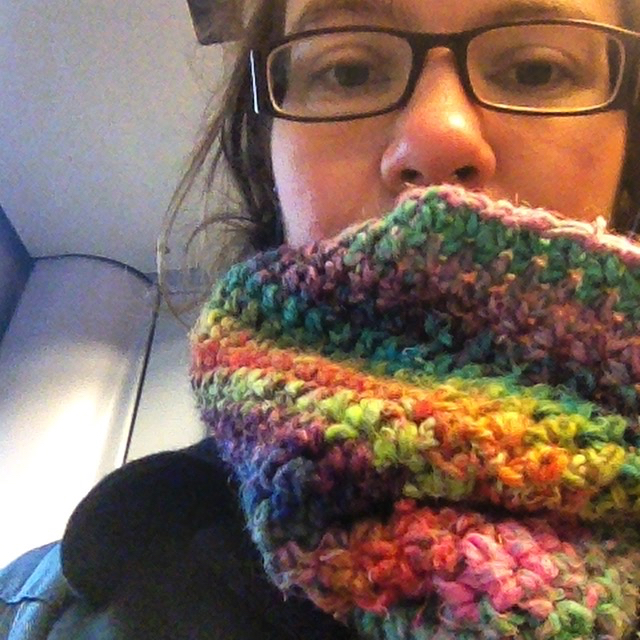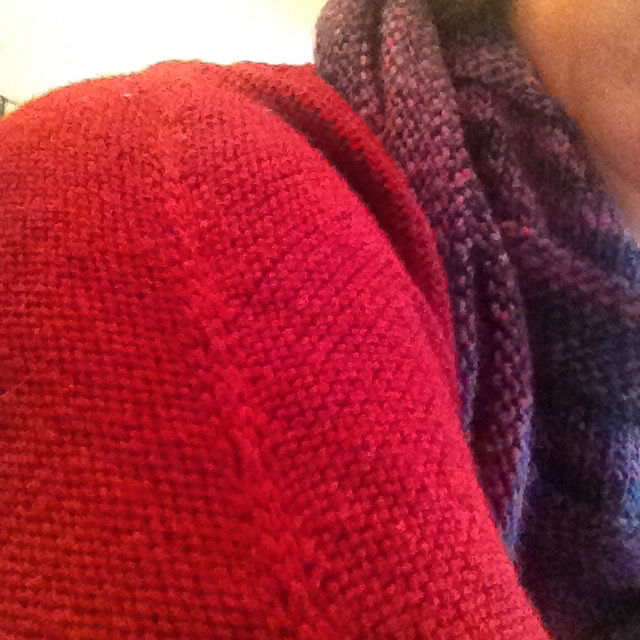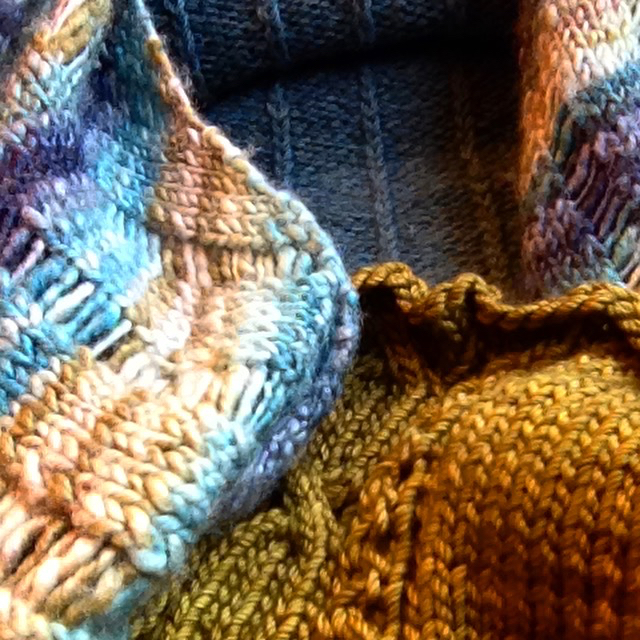Lab Goddess Fibre Club December 2015
So this month's inspirational woman scientist was certainly on my short list from the beginning, seeing as I work at her former institution in a building named after her. But I did not plan to have her front and center quite so quickly. A recent trip to the theatre to see Photograph 51 by Anna Ziegler was so moving that I decided that Rosalind Franklin had to be next for the club.
Dark Lady on Bluefaced Leicester
Here's the blurb that went out with the club packages:
Rosalind Franklin and Photograph 51
Born into a prominent Jewish family in Notting Hill, London, Rosalind Franklin grew up in a family that valued education and supported her scientific aspirations. She went to St. Paul’s Girls School and from there to Newnham College at Cambridge, where she graduated in 1941 with a degree in chemistry. She then joined the physical chemistry laboratory of the University of Cambridge, working under Ronald Norrish (winner of the 1967 Nobel Prize in Chemistry), but this was not a successful pairing. After resigning from Norrish’s lab, she went on to the British Coal Utilisation Research Association (BCURA), where she remained for several years, studying the porosity of coal. This work formed the basis of her Ph.D. research, which was completed in 1945.
At the end of World War II, Dr. Franklin contacted her friend Adrienne Weill, a former student of Marie Curie, for assistance in finding a position for “a physical chemist who knows very little physical chemistry, but quite a lot about the holes in coal”. She ended up in the lab of Dr. Jacques Mering at the Laboratoire Central des Services Chimiques de l’Etat in Paris. There she learned X-ray crystallography, which would be key to her role in the discovery of the structure of DNA a few years later.
Rosalind loved Paris, and blossomed in Mering’s lab – she was able to work independently but with a group of enthusiastic and collaborative colleagues. In 1951, however, she left Paris and returned to London, taking up a position as a research associate at King’s College London in the Biophysics Unit headed by John Randall. She was originally slated to work on proteins and lipids in solution, but upon arriving was redirected to work on DNA fibres with Maurice Wilkins and Raymond Gosling, her newly assigned Ph.D. student.
The relationship between Wilkins and Franklin was difficult: conflicting communications styles made their interactions rocky. Perhaps if their roles had been clearly defined and expectations laid out at the very start of Franklin’s time at KCL, their partnership would have been more successful, but miscommunication from Randall and Wilkins being on holiday when Franklin arrived, coupled with her understanding that she would be an independent researcher rather then an underling of Wilkins, made this challenging.
After Franklin and Gosling identified two forms of DNA (A and B), Wilkins continued with the A form while Franklin focused on the B form. Franklin’s X-ray crystallography photographs of DNA were extremely suggestive of a helical structure, but she was very cautious of publishing her data without being absolutely certain of her conclusions. Meanwhile, Francis Crick and James Watson from the Cavendish Laboratory at Cambridge had begun building a model of the B form of DNA using data that had, in part, been derived from research done by Wilkins and Franklin. The ultimate result was that, although Franklin’s papers were submitted either prior to Watson and Crick finishing their model, or almost immediately after (without any knowledge of the Cambridge model), the critical paper was Crick and Watson’s published in Nature on 25 April 1953. Franklin’s and Wilkins’s papers were published in the same issue of Nature, but were presented as being in support of the Cambridge group’s work, not as parallel and independent findings.
By this time, Rosalind had left KCL, and moved on to BIrkbeck College where she headed her own research group. She left DNA to study RNA and the structure of the tobacco mosaic virus. Her work at Birkbeck was very successful, as she published multiple papers and was awarded a grant from the US National Institutes of Health. Sadly, in mid-1956, while traveling in the States, she began to feel ill. Upon her return to the UK, it was discovered that she had ovarian cancer. She died in September of 1958, four years before Crick, Watson and Wilkins were awarded the Nobel Prize for their body of work on DNA, including the discover of its structure.
Franklin has been portrayed as a prickly and abrasive woman, who held herself apart from the old boys network that was wide spread in British academic circles at the time. She and Wilkins certainly had a fundamental personality clash, with her forthright and impatient communication style running up against his contrasting reticence. However, the real tragedy in this story is not that she didn’t win the Nobel Prize, but that she died too young. As Brenda Maddox writes in her excellent biography[1] “She was cheated of the only thing she really wanted: the chance to complete her work. The lost prize was life”.
[1] “Rosalind Franklin: the Dark Lady of DNA”, Harper Collins, 2002.
The colourway name comes from a (not-very nice) quote from a letter from Maurice Wilkins to Crick and Watson announcing with some relief that Franklin was leaving KCL. For this colourway, I was drawn to colours that might have been associated with post-war Paris, where Rosalind spent such a happy time before going to King’s: greys for the cobbled streets and stone buildings, pinks for springtime flowers, and dark red for (of course!) the wine. I'm very tempted to spin mine up over the holidays as a gradient - darker purpley red to pink to grey to slate blue - and knit a top down hat with a DNA motif. As you do...what would you make with yours?
Spaces are still available in the next round of the Lab Goddess Fibre Club, which will ship out in mid-January; the initial instalment is already in the works, and has a much... earthier inspiration, if that whets your appetites at all. Happy spinning!





